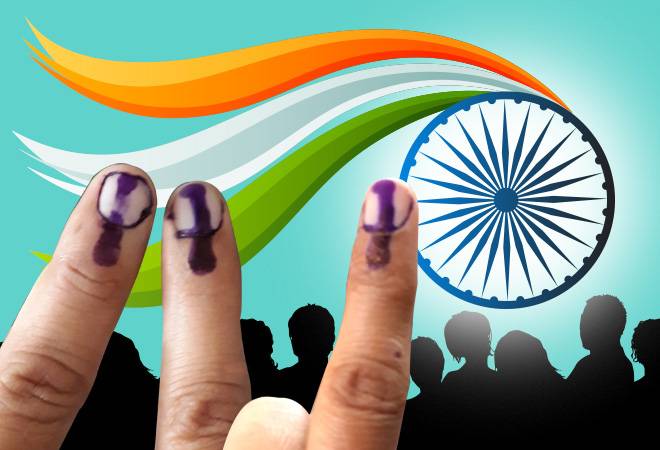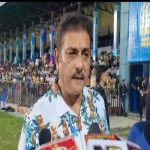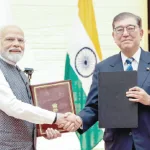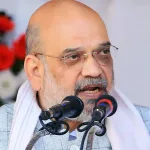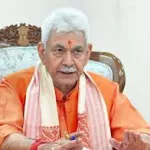People’s mandate for Legislative Assembly of Jammu Kashmir is sealed in the EVMs. Choice of the electorate will be clear by afternoon of October 8, 2024. Till then guessing game will continue. Pollsters will have few days to market their version also as the exit poll predictions will be released only after October 5 when voting concludes in Haryana.
Instead of deducing outcome in advance it is time to reflect on electioneering and its various features observed during campaigning after the schedule of the election was announced by the Election Commission of India on 16 August 2024.
Before moving forward one has to appreciate a) the free and fair environment provided by the administration for the election and canvassing, b) people’s enthusiastic participation both in numbers and intensity and also c) political players new and old fighting it out on ground in a democratic manner with a little liberty here and there. Credit must be given where it is due.
Digital showbiz
This electioneering witnessed massive use of digital propaganda by all players. While registered political parties used information communication technologies (ICTs) with somewhat restrain under the guidelines of the election commission it was almost a field day for influencers of every level.
Memes or graphical representation of speeches, behaviors of political leaders and various events were used humorously to engage mobile users. It was, in several cases entertainment of good quality with a pinch of salt. Incredible use of local language be that Kashmiri, Dogri or others was amusement for even older generation that continues to be unfamiliar with this new technology based mode of communication.
The Election Commission of India in order to conduct free and fair elections and to ensure level playing field among the stakeholders has issued detailed guidelines. Accordingly with an objective of reducing possibility of disturbing the level playing field by the Political Parties, their representatives and star campaigners by using “deep fakes”, AI generated distorted content which spread fake information/misinformation/disinformation and distortions of facts, the ECI brought to the specific notice of political parties of the provisions of the Model Code of Conduct, the Information Technology Act, 2000 and the Information Technology (Intermediary Guidelines and Digital Media Ethics Code ) Rules 2021 , the Indian Penal Code and framework of the twin acts namely the Representation of People Act, 1950 and 1951 that govern the regulatory framework and underline the emphasis for the same. The Commission directs political parties to take notice of regulatory framework governing the subject matter and strictly observe guidelines.
AI (artificial intelligence) was used to create deep fakes but it was on a much lower scale compared to recently held Lok Sabha Election 2024. Instead what we witnessed was large scale dissemination of information by contesting parties about their respective manifestos and also critical analysis statements of political rivals. Accusations and counter accusations were also visible on social media platforms at a unique level.
Sentiment vs real politik
Election campaigning as usual started with idealism, people’s aspirations, and grievances including daily issues of SADAK, PANI, and BIJLI confronting common people in the street. Every party tried to convince the voters about their original commitment to service of masses.
They tried to spare it out with political opponents on each other’s performance during the periods when they were in the government respectively. It is another matter that in this process all of them stood exposed before the public with huge gap between promise and delivery.
Allegations and counter charges on basic ideological issues were used freely. ‘Identity’ and its dilution; alliance with BJP, branding political opponents as B and C team and comparative analysis of pre and post 2019 according to their respective party stands were major issues of conversation during the campaign.
Political parties, experienced as they are, smelled the coffee sooner than expected. They become aware of what was really happening on the ground. The voter’s response was too obvious to be ignored. Throwing caution to winds leaders realized their disconnect with masses. That people have moved forward was in a way bitter pill to be swallowed.
Reversion back to emotional issues, hence, was quick and hurried. No one wanted to take the chance. Every individual and each party used time tested techniques to win over their respective voter constituency. Who was successful to what extent will be known on 8th October after counting of votes is completed. We will have to wait till then and continue to listen to claims and counter claims.
Entreating Voters
During election campaign we heard different speakers acknowledging several firsts of this election. Be that first legislative assembly election of JK UT or the first election of Jammu Kashmir without Ladakh region or for that matter the first election without Article 370 & 35A and also without a boycott call.
Interestingly in spite of all this the enthusiasm shown by the people was incredibly enormous and passionate. Not only did people choose proverbially “ballot over bullet” but they took vote seekers to task. Electorate asked question, enquired about promise vs performance report and reminded politicians that people haven’t forgotten deeds of these parties and candidates. Questions were raised about the capability of delivering on tall promises made afresh.
It was after a long time that parties and candidates had to sweat it out in every nook and corner of their respective territorial constituencies. So much so that former legislators, ministers and even Chief Ministers had to virtually beg for support. Competition in every constituency was stiff and solid. And this occurrence was not confined to any specific area but to entire Jammu Kashmir.
It in a way was reaffirmation of belief and confidence in democratic set up. Increase in number of contesting as independents rose from 274 in 2014 to 346 in 2024 as a result of this change on ground. The number of Independent candidates fighting election in 2008 however was 517.
Election Issues
Jammu region and Kashmir province are two heterogeneous areas is a well known fact. From weather to food to language, dresses and social life both these regions have a lot of dissimilarity. But the divergence in political opinions, tastes and aspirations was more noticeable during elections. This election was no different in this regard. In fact after a long time these political dissimilarities were visible and surfaced even within the same political organization.
Removal of Vikar Rasool as JKPCCI Chief and accompanying claims and counter claims over this replacement is just a point to underline these fault lines. Vikar Rasool Wani claimed that few forces conspired to stop him from becoming the Chief Minister. In a public meeting in Banihal to start his election campaign, Wani said that few people were conspiring since long against him and his removal from the post is the result of that. “Few people from across the tunnel consider us either Paharis or Gujjars and don’t treat us equally,” he said.
Omar Abdullah, the NC vice-president lashed out at Wani for his remarks. “Why should people vote for him (Wani)?” Omar asked, adding that even the Congress did not consider Wani worthy enough, having removed him as PCC chief just ahead of the elections. Kashmir valley witnessed similar accusations and allegations each other by political leaders and parties in every area.
Jammu scenario
Jammu province however was in a different mode. It was unmistakably evident during election campaign of every phase. Congress party lost the plot before even the settings. Soon after release of election manifesto by National Conference and offensive launched by BJP against its contents labeling Congress party as part of these promises as an alliance partner. People questioned silence of Congress party and took it as implied consent.
Derogatory manner in which Rahul Gandhi, the leader of opposition in Lok Sabha insulted Maharaja Hari Singh in his address to a public rally in Ramban area was practically the last nail in the coffin. It was taken not just as an affront to the legacy of Maharaja Hari Singh but as an insult to the entire Dogra community. People recalled How NC-Congress combine lead by Sheikh Abdullah and Jawahar Lal Nehru had insulted last ruler of Dogra dynasty tricked him into exile and disallowed even his dead body to return.
What followed was decades of discrimination against Jammu region by successive government returning to the discussion table in drawing rooms and streets & Bazars of Jammu region. Major issues that continue to cause immense pain in mind & hearts of every Jammuite are handling of issues like Govt. Ayurvedic College Jammu which was established in the year 1962, but closed in 1975 with zero batches from 1969. “The Jammu and Kashmir Permanent Resident (Disqualification) Bill 2004’’ which was passed by the Legislative Assembly within six minutes of being moved and in which two main political parties of the State, who pursue Kashmir-centric policies with a vengeance, and are virtually sworn enemies and arch rivals, the PDP and the National Conference (NC) voted together on this Bill. Similarly ignoring Ranjit Sagar Dam, Shahpur Kandi Dam project is being taken as deliberate attempt to hurt Jammu interests.
Irrespective of the outcome on 8th October, this election is all set to be a watershed election in the future progression of political movement in Jammu Kashmir. Democracy will flourish in real sense say the observers.
(The Author is former Member of Legislative Assembly and Spokesperson of BJP JK-UT)


